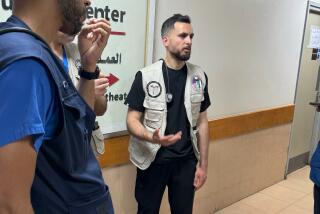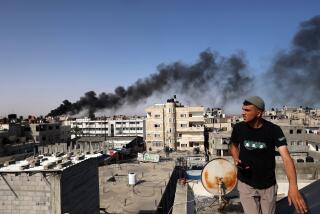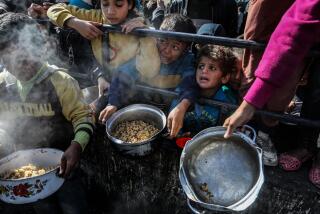Local Aid With a Global Reach
None of it seems quite real. Maybe itâs the far-off location of the disaster, the massive number of dead or the difficulty of accepting our own fragility. An earthquake hits beneath the sea, a tsunami fans out, and corpses line beaches and hang from trees.
You want to say something, but everything is a cliche. You want to do something, but nothing seems adequate. Still, I wanted to send a small donation, and so I ran my finger down The Timesâ list of relief agencies working in Southern Asia and came across Doctors Without Borders, which brought back a memory.
At the end of the first Persian Gulf war, in a Kurdish refugee camp on the border of Iraq and Turkey, I watched as a long line of the sick and injured waited for help from a European physician from Doctors Without Borders.
The doctor confided in me that he was having a tough day. A woman at the end of the line had tried to cut ahead of the others with her sick child. The doctor told her sheâd have to wait like everyone else, and when her turn finally came, the child was dead.
It wasnât the doctorâs fault. He was a volunteer, parachuted into a hellish place where there werenât enough doctors or supplies to save everyone, and there were fresh graves everywhere.
I sent several checks to Doctors Without Borders over the years, but this time I wanted to feel some kind of a local connection to the relief effort.
So I called the International Medical Corps, based in Santa Monica, to ask how the money would be spent if someone sent $25, $250 or $2,500.
Stephen Tomlin, a corps vice president with a background in public health, told me the group has doctors and other relief workers in 20 countries, including Iraq and Afghanistan.
Typically, he said, the nonprofit and nonpolitical group tries to fortify existing health services with supplies and training by volunteers from around the world.
A 2002 Worth magazine article listed the group among the top 100 charitable organizations in the United States, reporting that 92 cents out of every donated dollar goes directly to humanitarian relief and development programs.
âThe only surgeon in Somalia right now is IMC-trained,â Tomlin said, and as the agencyâs website says, the group often ventures into areas of the world âwhere few organizations dare to serve.â
The group has an office in Jakarta and supports public health programs âall over the 17,000 islands of Indonesia,â Tomlin said. As we spoke, a team of its officials was headed to Indonesia to figure out how to best help, particularly in the coastal Aceh province of northern Sumatra, where estimates of the death toll were above 20,000 and still climbing.
That region was rocked long before the tsunami hit, thanks to skirmishes between Christians and Muslims that have waylaid the economy and aborted government services. The group is sending water and sanitation engineers to the area, trying to head off a public health catastrophe among shell-shocked, grieving survivors.
Hygiene kits and first-aid supplies from the corps are already on the way to Indonesia, Tomlin said. But one lesson from years of disaster relief is that despite the best intentions of good Samaritans around the world, money is a more useful donation than clothing or any specific supplies.
After Hurricane Mitch hit Central America, Tomlin said, airports and shipping channels were clogged with unmarked containers of donated goods, including Teddy bears, that only got in the way of the relief effort. In rural areas of Honduras, he said, the wrong kinds of antibiotics were arriving from around the world.
âIf weâd had money in our pockets, we would have been able to buy penicillin from local markets,â he said. âAnd when we can buy supplies from local markets in Jakarta or Colombo [Sri Lanka], weâre doing a lot more for the economyâ than if they are bought in the United States.
Tomlin bristled when I asked what he thought about the suggestion, made early this week by United Nations humanitarian aid chief Jan Egeland, that the U.S. government and other wealthy nations were being stingy with their contributions to the relief effort.
âItâs crap,â snapped Tomlin, a native of England. âThis happened on a Sunday, and most people were still out on Monday. The whole process has to go through ambassadors, and then the whole disaster response mechanism kicks in. The generosity that comes out of America is awesome in this kind of situation.â
Itâs going to have to be, said Nancy Aossey, the groupâs president.
âThere are going to be huge health implications from this disaster,â she said. âFrankly, the magnitude of it is unprecedented, and itâs going to take a lot of help from a lot of organizations and individual donors across the world.â
*
A list of relief agencies can be found on Page A12, and more information on International Medical Corps is available at www.imcworldwide.org
More to Read
Sign up for Essential California
The most important California stories and recommendations in your inbox every morning.
You may occasionally receive promotional content from the Los Angeles Times.











